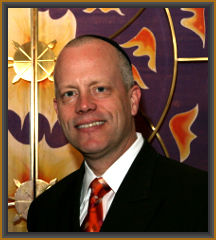
 |
July 29, 2022 (30 Tammuz 5782) A Mitzva Simcha! Dear Holy Friends, I hope this correspondence finds you doing well and in good health. We hope you will join us this Shabbat at 10:30am for our in-person services, which will take place in our holy sanctuary as well as over our regular Zoom prayer link. This Shabbat, we are thrilled to celebrate the Bar Mitzvah of Haley Viner. We wish Haley, his parents, Omer and Inbar, and their entire family, Mazel Tov for their Simcha (celebration) and thank them for sponsoring the Shabbat Kiddush. While many of us are accustomed to the ritual of a Bar Mitzvah ceremony, I would like to take a look at the origins of the tradition, while also acknowledging that in many countries, where Jews were a persecuted minority, the idea of having a public celebration of a child “becoming of age” and celebrating their religious heritage was forbidden. Thank God, in our country, we are entitled and encouraged to embrace our faith traditions! In the Mishna (Jewish oral traditions) of Pirke Avot, Yehuda ben Tamai alludes to the idea of personal and religious maturation in the following teaching: “He used to say: At five years of age, the study of Scripture; At ten, the study of Mishnah; At thirteen subject to the commandments; At fifteen, the study of Talmud; At eighteen the bridal canopy; At twenty, for pursuit [of livelihood]; At thirty, the peak of strength; At forty, wisdom; At fifty, able to give counsel; At sixty, old age; At seventy, fullness of years; At eighty, the age of “strength.” In the 16th century, among the Jews of Germany and Poland, it was the accepted custom that a boy could not begin to wear Tefillin before the day following his 13th birthday. In the 17th century, this custom was modified and a boy could begin to wear Tefillin two or three months before he became Bar Mitzvah. This change was made, so the boy would be well acquainted with the practice and rules of laying Tefillin by the time he reached his majority. The right of a minor to be called up to the Bimah, or pulpit, for the reading of the Torah, has also changed among the Ashkenazim (German and Polish Jews). As far back as the 13th century, among the Franco-German Jews, the privilege of being called up for the reading of the Torah was withdrawn from minors. Only on Simchat Torah, the last day of Sukkot, could minors enjoy this right. The attainment of religious majority signified the attainment of the right to have an Aliyah (to witness the reading of the Torah on the bimah and to recite the blessings over it). Looking more locally and recently, Judith Kaplan, at age twelve, became the first American to celebrate a Bat Mitzvah, on March 18, 1922. Judith was the oldest daughter of Rabbi Mordecai Kaplan, the founder of Reconstructionist Judaism. Believing that girls should have the same religious opportunities as their brothers, Rabbi Kaplan arranged for his daughter to read Torah on a Shabbat morning at his synagogue, the Society for the Advancement of Judaism. Having taught over two thousand B’nei Mitzvah throughout my career, I cannot begin to explain to you the continued joy it gives to me to shepherd families through this process. Watching young people take ownership of their traditions, learn to chant, and study Torah is the greatest joy I could possibly have. As we celebrate Haley’s Bar Mitzvah this Shabbat, we should all take pride in the “next generation” taking its place in our community and beginning to carry our traditions forward. We wish Haley a Mazal Tov and hope that he will always feel proud of his Jewish heritage. Shabbat Shalom, Rabbi Eric Wasser, EdD, Hon.DM
|